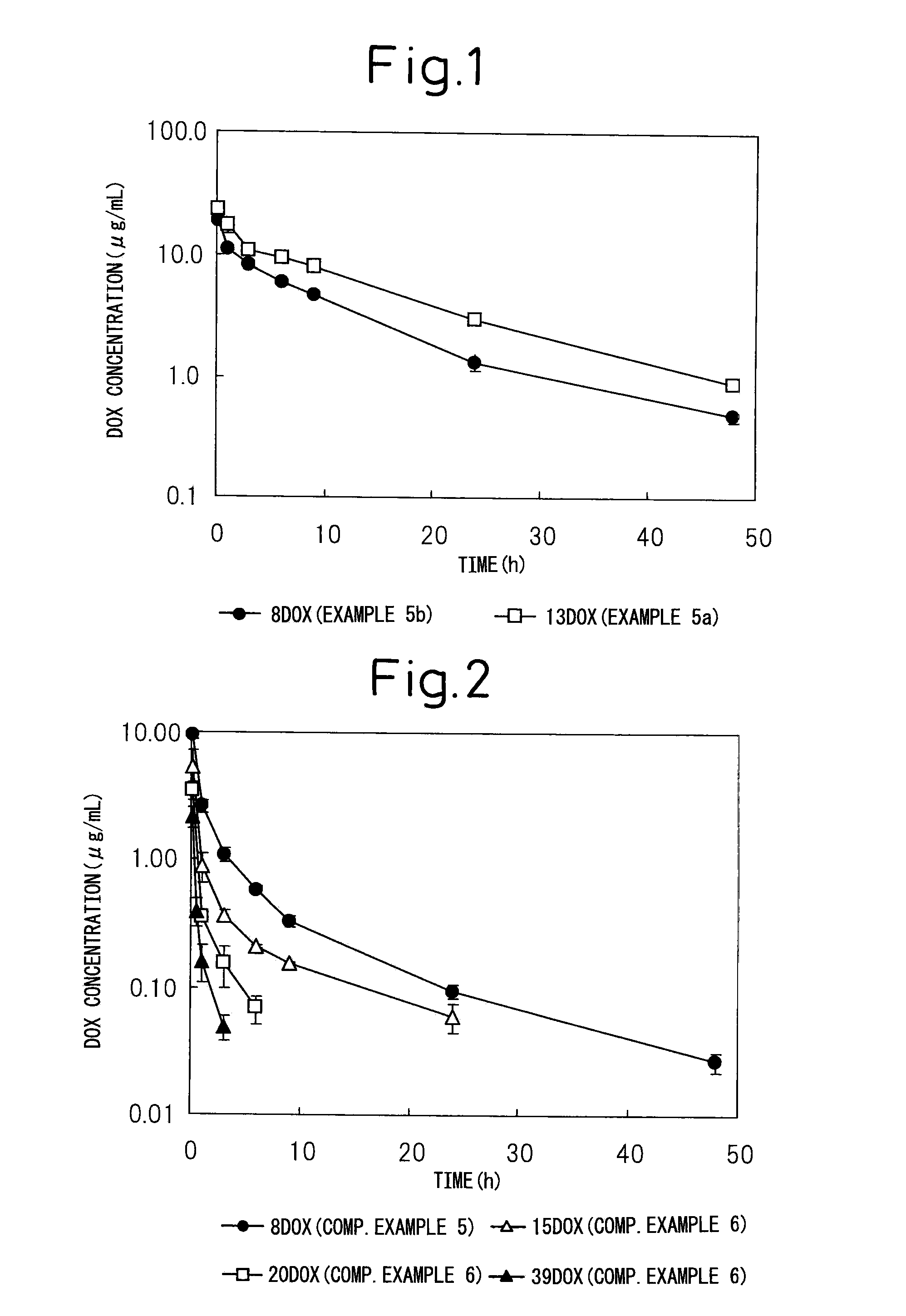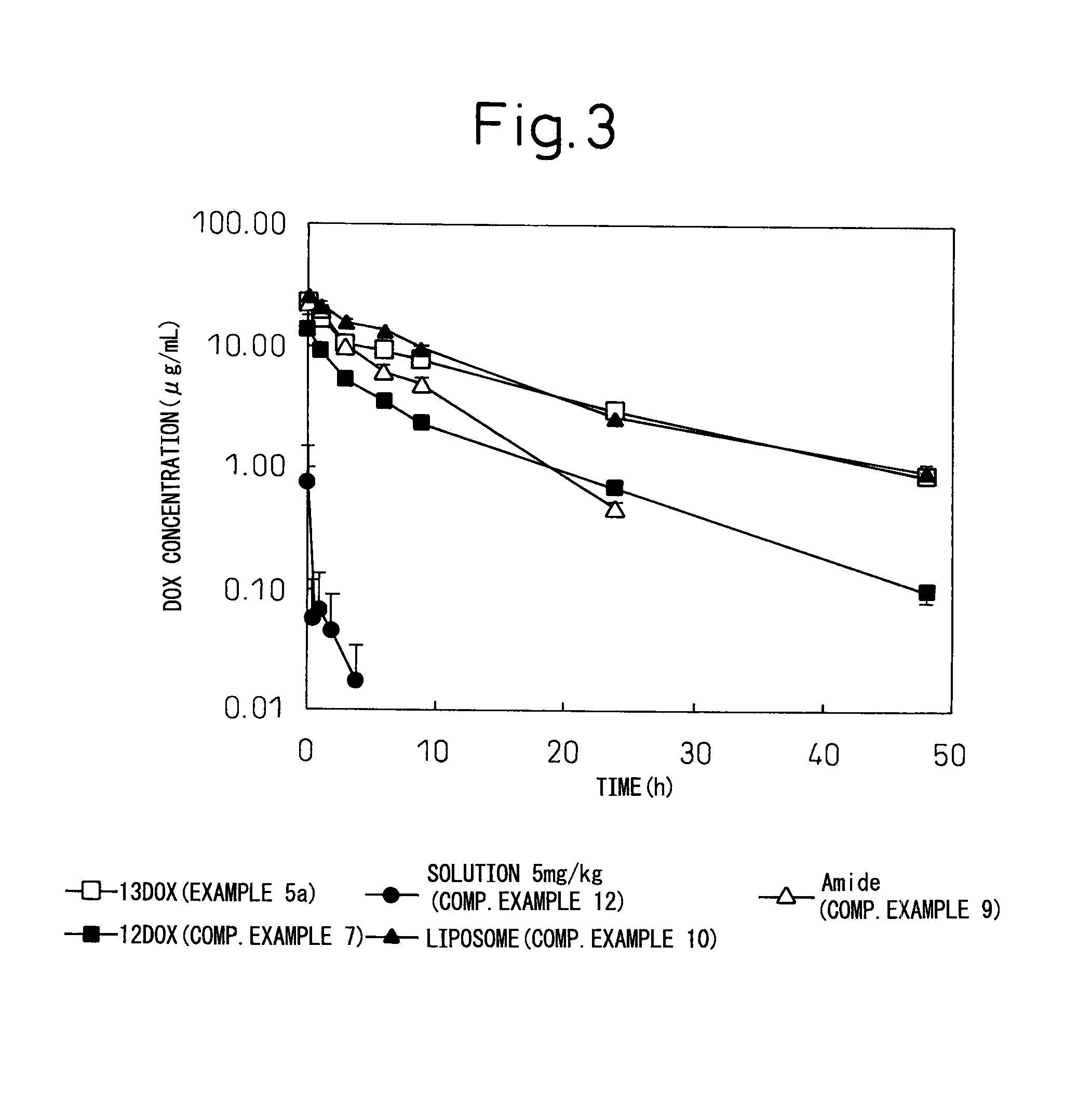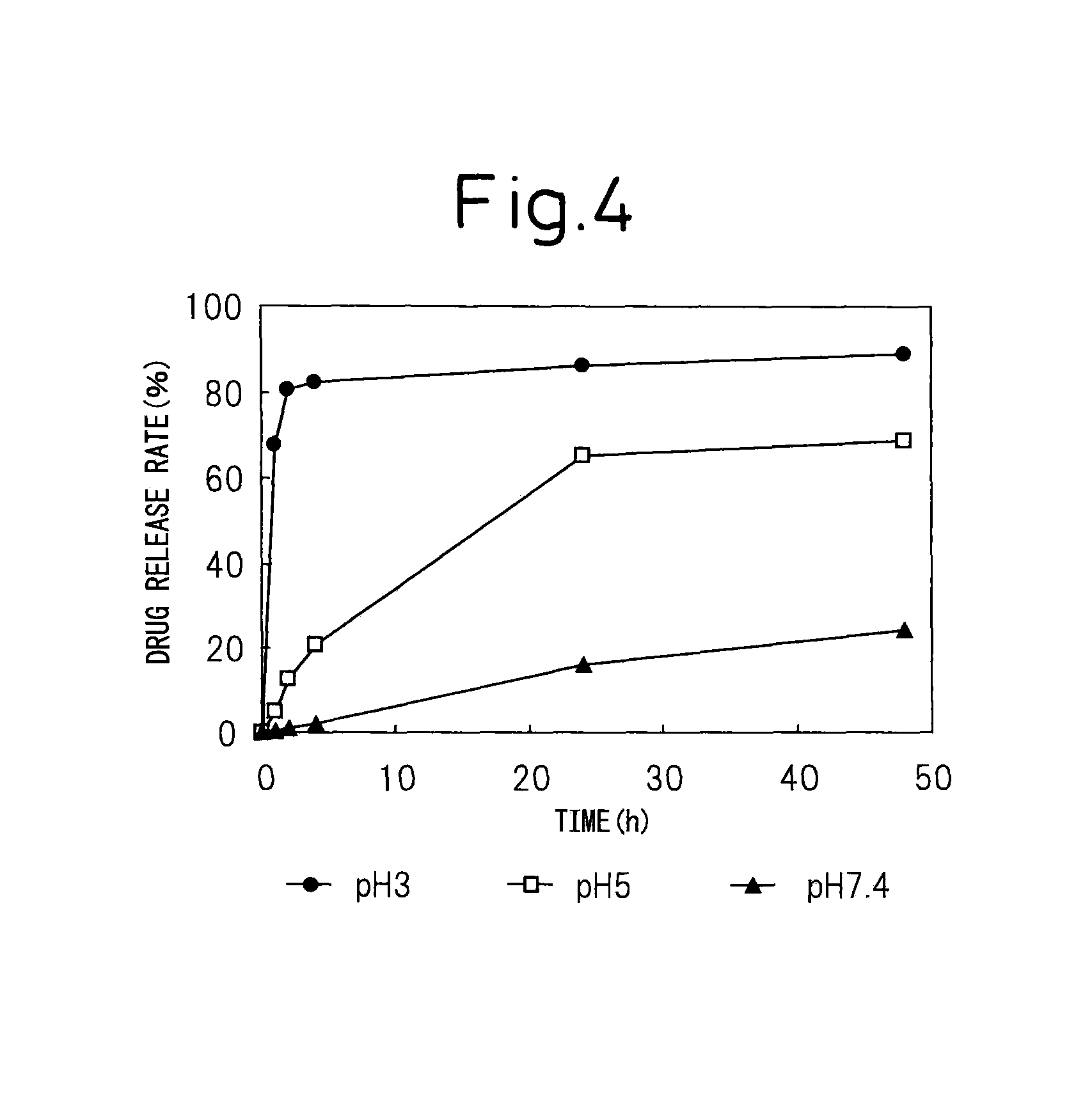Block copolymer for drug conjugates and pharmaceutical composition
a technology of conjugates and copolymers, which is applied in the direction of drug compositions, peptides, microcapsules, etc., can solve the problems of difficult to maintain the effective drug concentration, evade the biological mechanism, and serious challenges in the control of the release rate of drugs, so as to achieve excellent retention in blood and expand the therapeutic range.
- Summary
- Abstract
- Description
- Claims
- Application Information
AI Technical Summary
Benefits of technology
Problems solved by technology
Method used
Image
Examples
example 1
Synthesis of MeO-PEG-PBLA
[0132]In argon atmosphere, to 61.64 g (5.14 mmol) of polyethylene glycol having methoxy at one end and aminopropyl at the other end (MeO-PEG-NH2, mean molecular weight: 12,000), 400 ml of dehydrated dimethyl sulfoxide (DMSO) and 200 ml of dehydrated N,N-dimethylformamide (DMF) were added and dissolved, to which 67.21 g (269.68 mmol) of β-benzyl-L-aspartate N-carboxylic acid anhydride (BLA-NCA, MW=249.22) was added, and allowed to react overnight at 37° C. in argon atmosphere. The solution after reaction was added dropwise to 6 L of hexane / ethyl acetate mixed solution (1 / 1) to precipitate a polymer. It was filtered using Kiriyama filter paper (φ 90 mm, 5B). To the polymer was added 6 liters of a clean hexane / ethyl acetate (1 / 1) solution, and washing with a similar procedure was repeated twice, and then it was dried under reduced pressure to obtain a powder of the methoxypolyethylene glycol-poly(β-benzyl-L-aspartate) block copolymer (MeO-PEG-PBLA). The compoun...
example 2
Synthesis of MeO-PEG-pAsp (Hyd, Bn)
[0141]In argon atmosphere, to 5 g (0.25 mmol) of MeO-PEG-PBLA (12-40) obtained in Example 1, 50 ml of dehydrated DMF was added and dissolved. Anhydrous hydrazine 159 μl (5 mmol, Mw=32.05), 0.5-fold equivalent relative to the benzylester (20 equivalents relative to the block copolymer), was added and allowed to react overnight at room temperature. After the reaction, 700 ml of 2-propanol cooled to −20° C. was added dropwise to precipitate a polymer. Centrifugation (8,000×g, 15 min, 4° C.) was carried out to collect the polymer. Washing with a similar centrifugation procedure was repeated twice with clean 2-propanol cooled to −20° C. Washing with a similar centrifugation procedure was repeated two more times with 700 ml of hexane / ethyl acetate (1 / 1) mixed solution. After filtration using Kiriyama filter paper (φ 45 mm, 5B), it was dried under reduced pressure to obtain a powder polymer (MeO-PEG-pAsp (Hyd, Bn)). The compound obtained was confirmed to ...
example 3
Synthesis of MeO-PEG-pAsp (Hyd, C8)
[0142]In argon atmosphere, to 1.5 g (0.075 mmol) of MeO-PEG-PBLA (12-40) obtained in Example 1, 15 ml of dehydrated DMF was added and dissolved. n-octylamine 249 μl (1.5 mmol, Mw=129.25), 0.5-fold equivalent relative to the benzylester (20 equivalents relative to the block copolymer), was added and allowed to react overnight at room temperature. Subsequently, anhydrous hydrazine 47.6 μl (1.5 mmol), 0.5-fold equivalent relative to the benzylester (20 equivalents relative to the block copolymer), was added and allowed to react overnight at room temperature.
[0143]After the reaction, it was purified in a procedure same as Example 2 to obtain a powder polymer (MeO-PEG-pAsp (Hyd, C8)). The compound obtained was confirmed to be the compound of interest by conducting acetylation as in Example 2 followed by 1H-NMR under the condition described above. From the result of 1H-NMR, the polyaspartic acid side chain per molecule of the polymer had 20 hydrazide gro...
PUM
| Property | Measurement | Unit |
|---|---|---|
| molecular weight | aaaaa | aaaaa |
| temperature | aaaaa | aaaaa |
| temperature | aaaaa | aaaaa |
Abstract
Description
Claims
Application Information
 Login to View More
Login to View More - R&D
- Intellectual Property
- Life Sciences
- Materials
- Tech Scout
- Unparalleled Data Quality
- Higher Quality Content
- 60% Fewer Hallucinations
Browse by: Latest US Patents, China's latest patents, Technical Efficacy Thesaurus, Application Domain, Technology Topic, Popular Technical Reports.
© 2025 PatSnap. All rights reserved.Legal|Privacy policy|Modern Slavery Act Transparency Statement|Sitemap|About US| Contact US: help@patsnap.com



